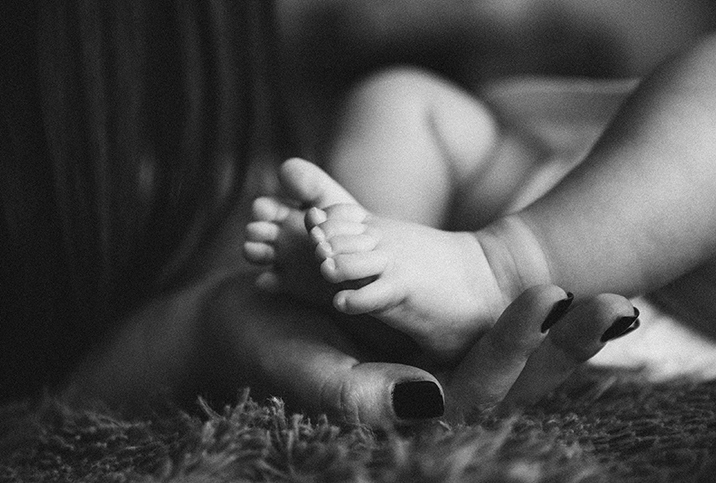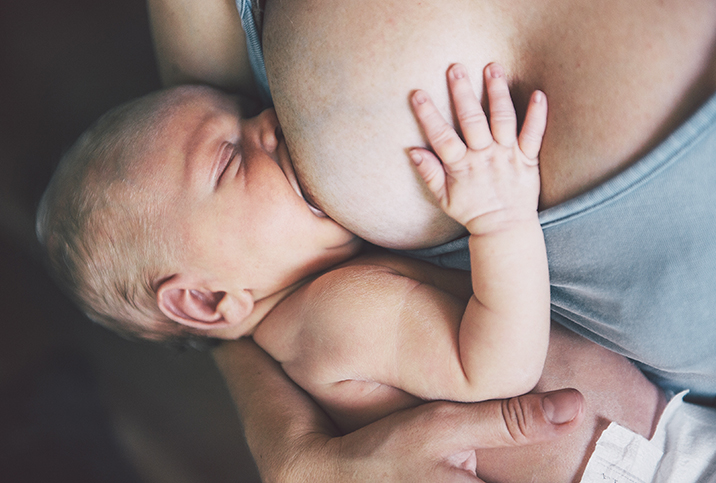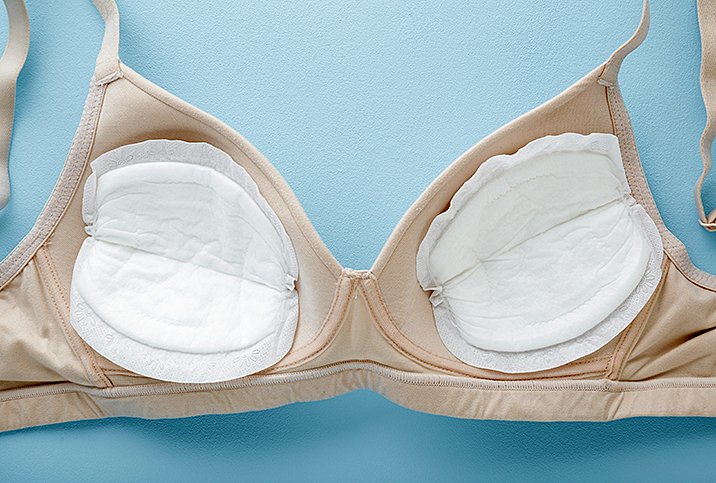Your Toolkit for Postpartum Pain

You know when the contractions start and you enter active labor, you're going to be dealing with pain. Every movie, TV show and your mom's retelling of her own birthing experience has prepared you for this less-than-pleasant event of pushing a watermelon-sized baby through your hoo-hah.
But what often goes untold is the pain that comes after your bundle of joy arrives. Unfortunately, birthing a baby results in bruising and possible tearing of your vagina and perineum, and as your milk comes in and your baby starts breastfeeding, you may also experience pain, swelling and cracking around your breasts and nipples. While you can reassure yourself "this too shall pass," that doesn't make the moment-to-moment reality any more pleasant.
"Postpartum pain levels vary from person to person and depend greatly on individual pain tolerance," said Patricia A. Evans, a nurse practitioner and certified nurse midwife at MemorialCare Orange Coast Medical Center in Fountain Valley, California.
That is why you need to be prepared. Maybe you'll be one of the lucky ones and breeze through your postpartum recovery without much of an issue, but you don't want to be unpleasantly surprised.
In addition to stocking up on basic baby supplies before your little one makes their appearance, stock up on mama supplies to help ease the experience of postpartum pain. As Evans emphasized, "You must take care of yourself first before you can take care of anyone or anything else."
Problem: Constipation
Solution: Stool softeners and a healthy, fibrous diet
Chances are you're no stranger to constipation, as it's a common symptom of pregnancy, especially in later stages when your growing baby and hormone changes slow down your digestive system. Unfortunately, that doesn't immediately change after childbirth, and the first post-birth bowel movement can be particularly challenging. This is partly due to constipation and partly due to the fact your under-region just went through a major trauma, and chances are your rectum, perineum and vagina are all more painful than you'd like.
In the early hours and days following giving birth, don't try to be a hero. Use the tools available to help ease constipation and encourage your intestines to get back to work. Go ahead and take those stool softeners, drink plenty of water and eat lots of fruits and veggies—the fiber content will help move things along. And, of course, feel free to take Tylenol or another doctor-approved OTC pain reliever.
Problem: Hemorrhoids
Solution: Hemorrhoid cream and witch hazel
Another one of those causes of constipation could be hemorrhoids, which you may have become all too familiar with during your third trimester. Unfortunately, it can take time for the swollen veins in your rectum to return to normal size.
"These hemorrhoids can sometimes be large and painful, and bleed," said Evans. She suggests spreading a ribbon of hemorrhoid cream on a pad before placing it on the hemorrhoid for better relief. And, in the same way, witch hazel pads can help, too. Just keep in mind it can take several weeks before hemorrhoids shrink, but the time (while painful) will go fast.
Problem: Vaginal bruising and swelling
Solution: Ice or cold pads and pain relievers
Remember that whole pushing a baby the size of a watermelon out of your vagina thing? Well, even though your body was made to do the work, that doesn't mean it's easy or that recovery comes pain-free.
Chances are you're bruised and swollen, and might have some tearing to contend with. Respect your pain and take OTC pain relievers, as needed. Evans recommends Tylenol, Motrin and Aleve as safe options for breastfeeding and postpartum pain.
Also, using ice packs or specially made pads that can be kept in the freezer and used like ice packs can help reduce swelling and ease pain.
Problem: Perineal tearing and stitches
Solution: Perineal sprays, witch hazel, ice and pain meds
"The area between the vagina and rectum, the perineum, stretches, swells and often tears as the baby is emerging into the world," said Evans. "After the birth, the tears (or episiotomy, where a doctor cuts the perineum intentionally) are repaired. This heals usually within a week or so." But even though the healing is fast, you'll still be in pain as it repairs.
The good news is there are lots of ways to ease that pain. You can make your own ice-pack pads, or buy pads designed for this purpose, like the gentlepak. If you opt to make your own, Evans suggests wetting a large pad and freezing it. When it's frozen, simply use it in place of a dry pad for 20 minutes before discarding. You can also soak these pads in witch hazel before freezing as an added boost to ease discomfort. Or you can buy pre-soaked witch hazel pads, store them in the freezer, and simply place them on top of your pad to help with the pain.
It's also important when urinating to use a peri bottle with warm water that you spray on your perineum to prevent pain during urination. Hospitals often provide these bottles for you, but you can purchase specially designed bottles, like the Frida Mom Upside Down Peri Bottle, which comes with rave reviews from users. "It holds double the volume of a standard hospital peri bottle, and being able to hold it upside down means you can actually use all of that water volume," said Anne Aslanides, a mom of two who blogs at Easier Motherhood. "I wish I'd had it in the hospital with my firstborn."
You may also consider taking baths with Epsom salts, if your doctor gives you the go-ahead (baths typically aren't advised if you had a C-section). "Epsom salts will help to relax you and aid in the healing of the perineum," said Evans. And if you find you're still in pain, go ahead and pop that OTC pain reliever.
Problem: Continued bleeding
Solution: Sturdy maxi pads and disposable underwear
No, the bleeding doesn't just stop after you've delivered your placenta. Postpartum bleeding, known as lochia, acts like a heavy period for a few days post-delivery then lightens up, continuing for about two weeks. "If it becomes heavier as you increase your activity in the one to two weeks after delivery, it's likely a sign you're doing too much and need to sit down and rest," said Evans, who emphasized how important it is to listen to your body and give yourself time and space to heal.
There's not much you can do about the bleeding itself, but stocking up on sturdy pads is important, as tampons are ill-advised in the first few weeks after delivery while your vagina is healing. Beyond pads, though, Evans suggests using disposable underwear or underwear you're OK with throwing out. "Bleeding can be heavy at times the first week, and the stains don't always wash out," she said. "There are many stressors the first few weeks after giving birth, and underwear shouldn't be one of them."
Problem: Clogged milk ducts and engorged breasts
Solution: Cold packs, witch hazel pads and vinegar
Just as your swollen va-jay-jay benefits from cold packs and witch hazel, so do your breasts and nipples, especially in the first few days after childbirth as your milk starts to come in. Again, you can make your own using disposable breast pads and soak them in water or witch hazel before freezing, or you can opt to purchase premade packs.
And just as white vinegar can help unclog your coffee maker, it can also help unclog your milk ducts. Clogged ducts can cause redness, swelling and pain, which won't help when your breasts are already tender and sore. But the solution is thankfully simple. "Soak a cotton ball in vinegar, then nestle it between your nipple and nursing bra or nursing pad to help dissolve any milk solids near the surface," said Aslanides.
Problem: Cracked or sore nipples, or possible mastitis
Solution: Nipple cream, cucumber slices and shredded carrot
Not only are your breasts full and swollen from all that milk you're now creating, chances are all the latching and suckling from your new baby isn't doing your nipples any favors. If you find yourself yelping in pain every time you sit down to feed your baby, you're certainly not alone. And if bacteria enters one of those cracks? You could end up with mastitis, which Evans explained is a bacterial infection of the breast.
If you think you have mastitis, you're probably going to need a round of antibiotics, so go ahead and call your doctor. But to prevent mastitis, take good care of your nipples. Start by using a standard nipple cream after breastfeeding. If your nipples become painful, dry or cracked, and are bleeding, though, have an all-purpose nipple ointment (APNO) made. These are mixed by a pharmacist and inserted into a tube, so call your doctor about getting a prescription.
You may also want to experiment with naturally soothing nipple relievers, like cucumber slices. "Cucumbers on sore nipples are a game changer," said Rachel Welch of Revolution Motherhood. "Think of the spa use on your eyes—they're cooling and hydrating." The same concept applies to shredded carrots. Just make sure you clean these veggies well before applying them to your nipples.
Making it through the first weeks
Just remember, the first three months following childbirth are often referred to as the "fourth trimester," and just as there were good and bad things about the first three trimesters, you're going to run into joys and struggles as you recover and transition to motherhood.
Stock up on the items you can, put your doctor, lactation specialist and pharmacy on speed dial, and do your best to rest, relax and listen to your body.


















